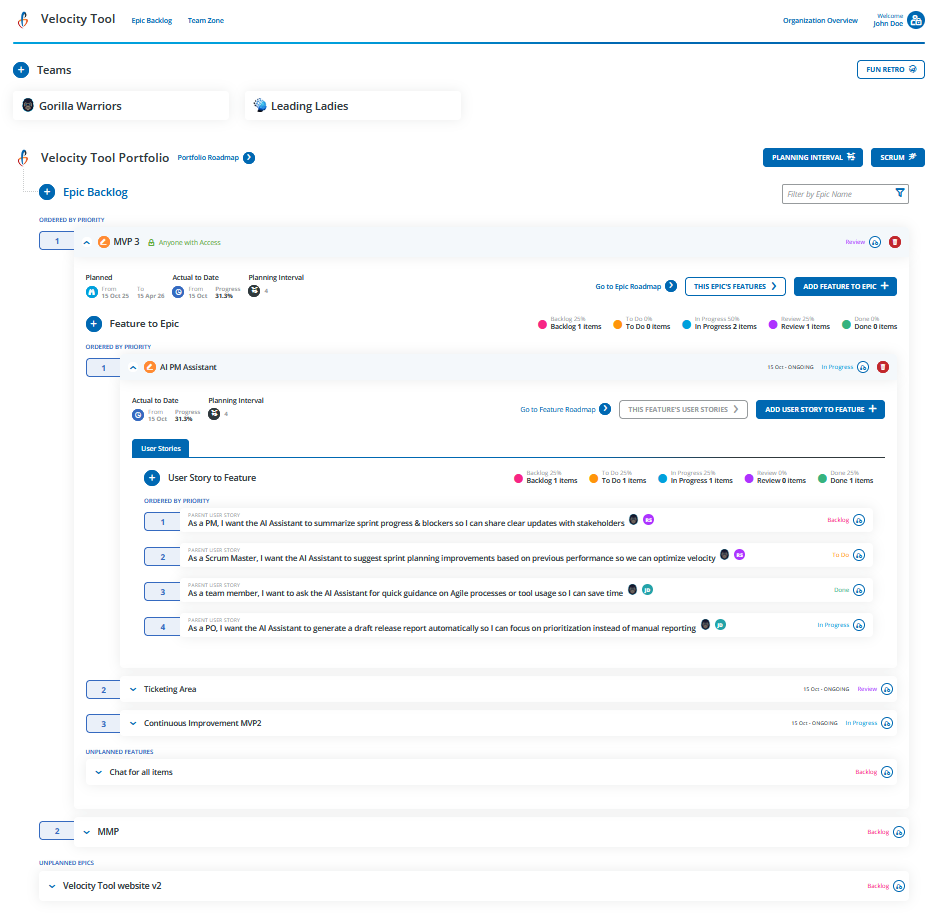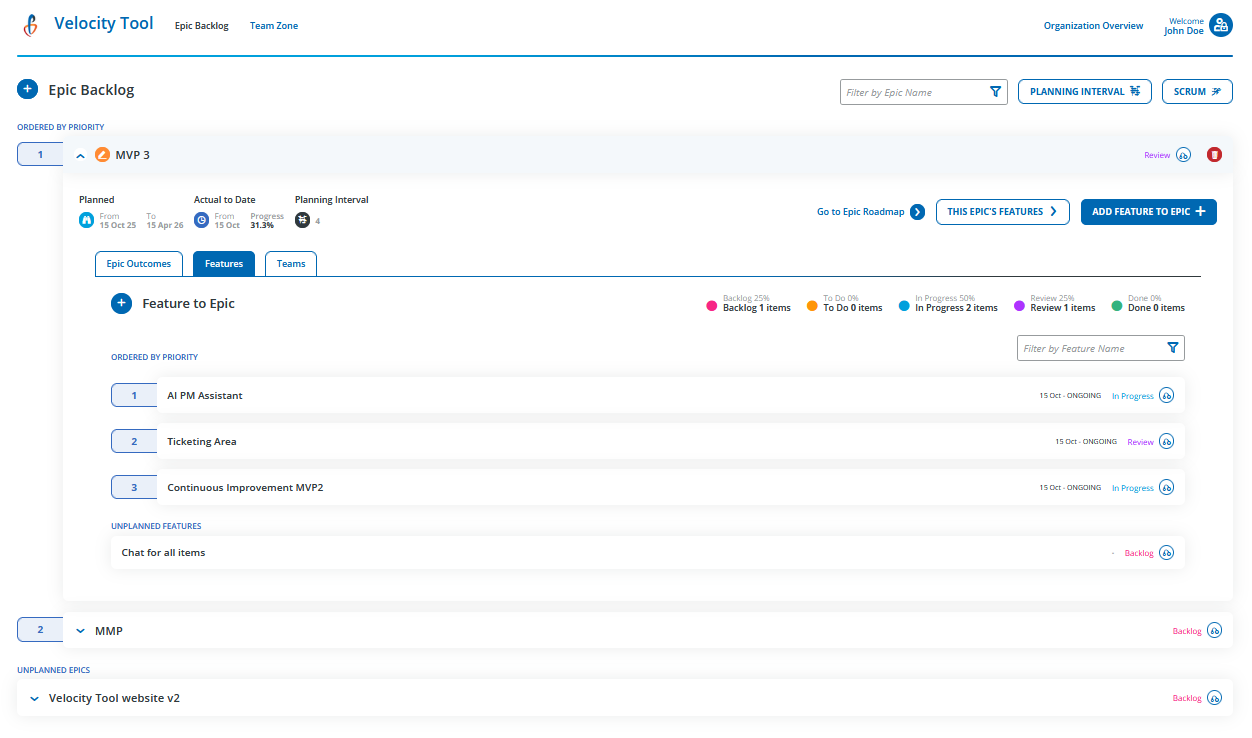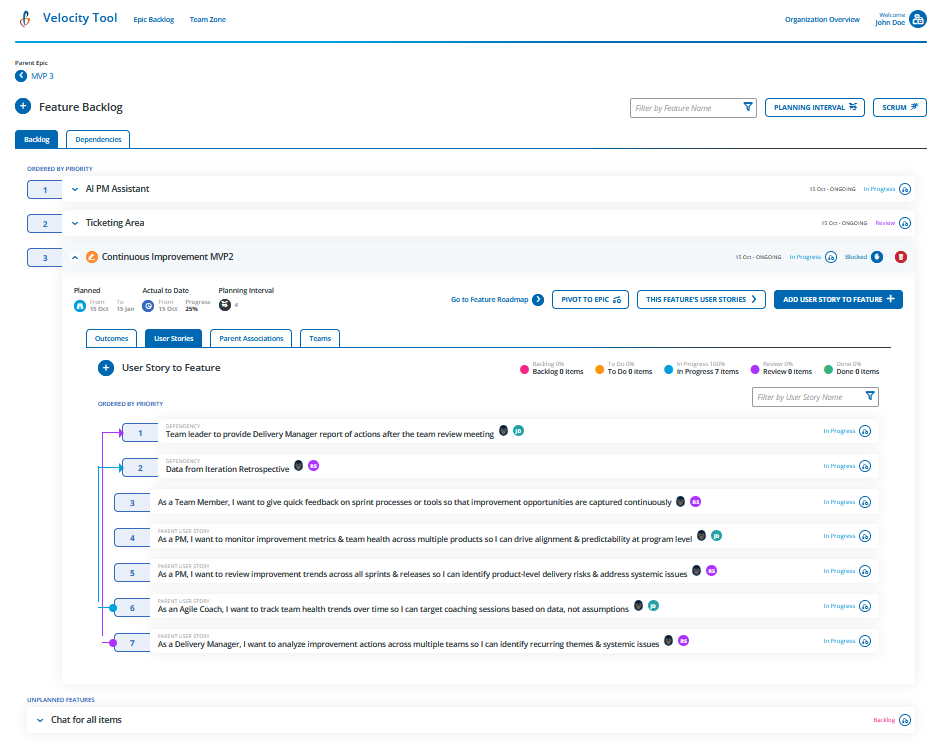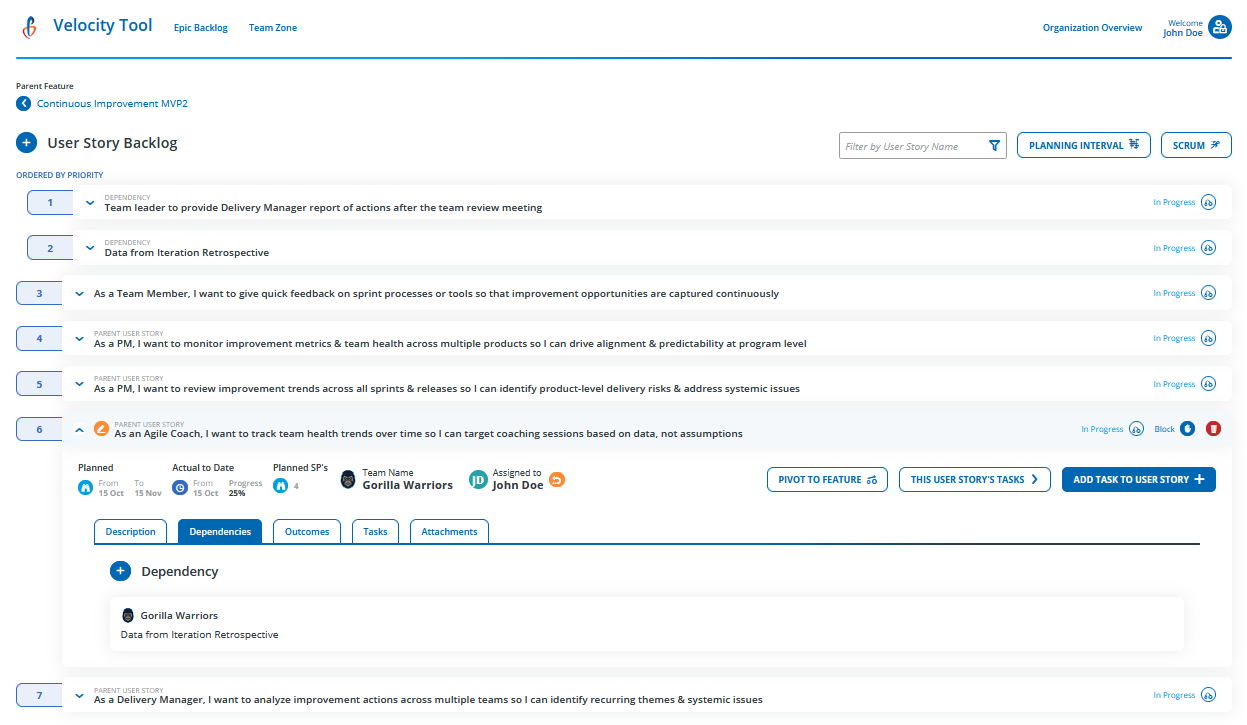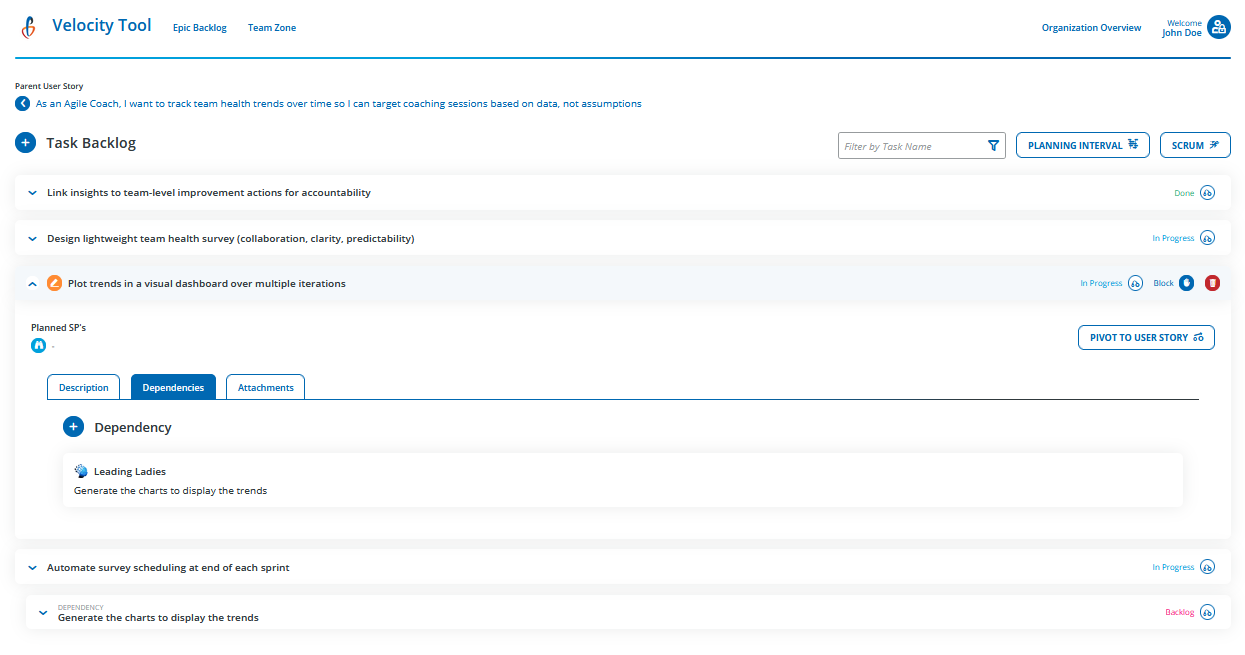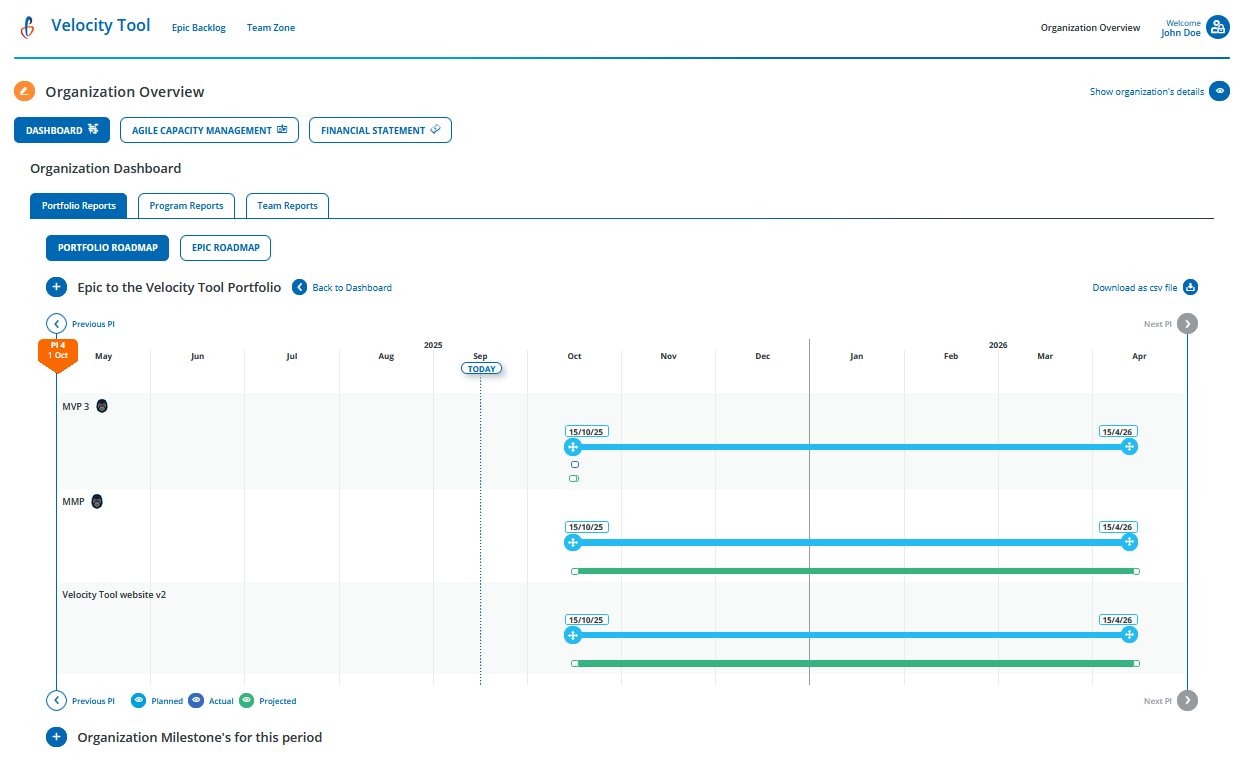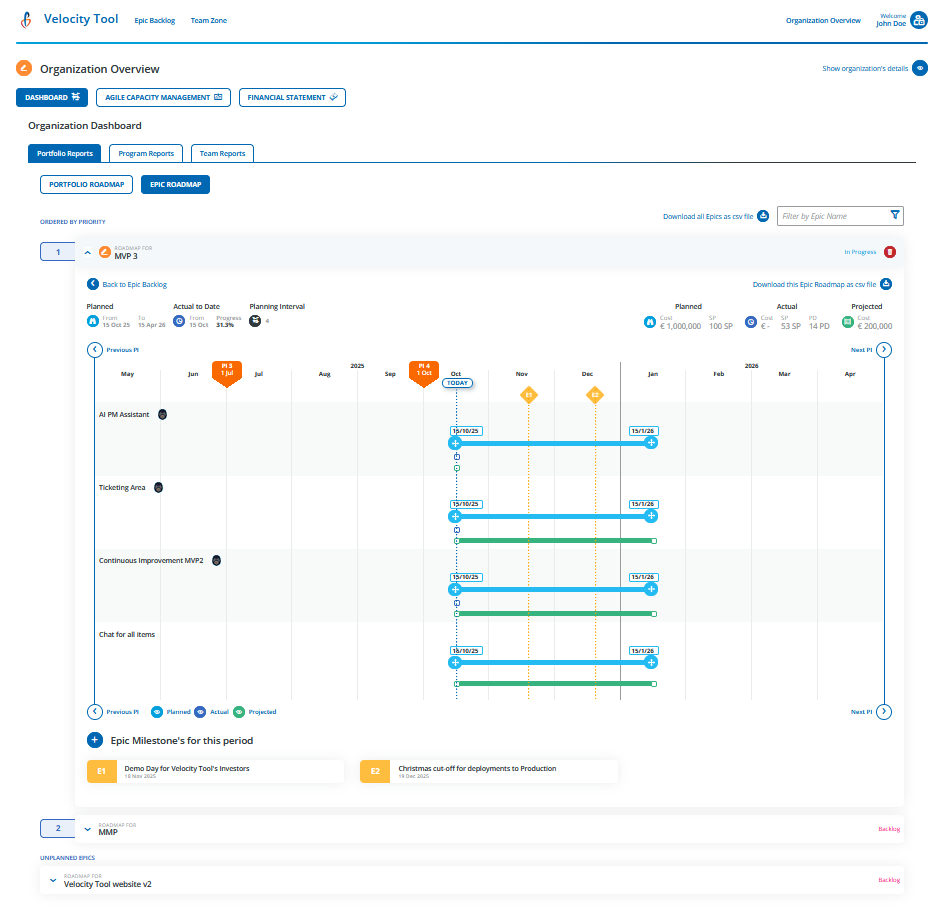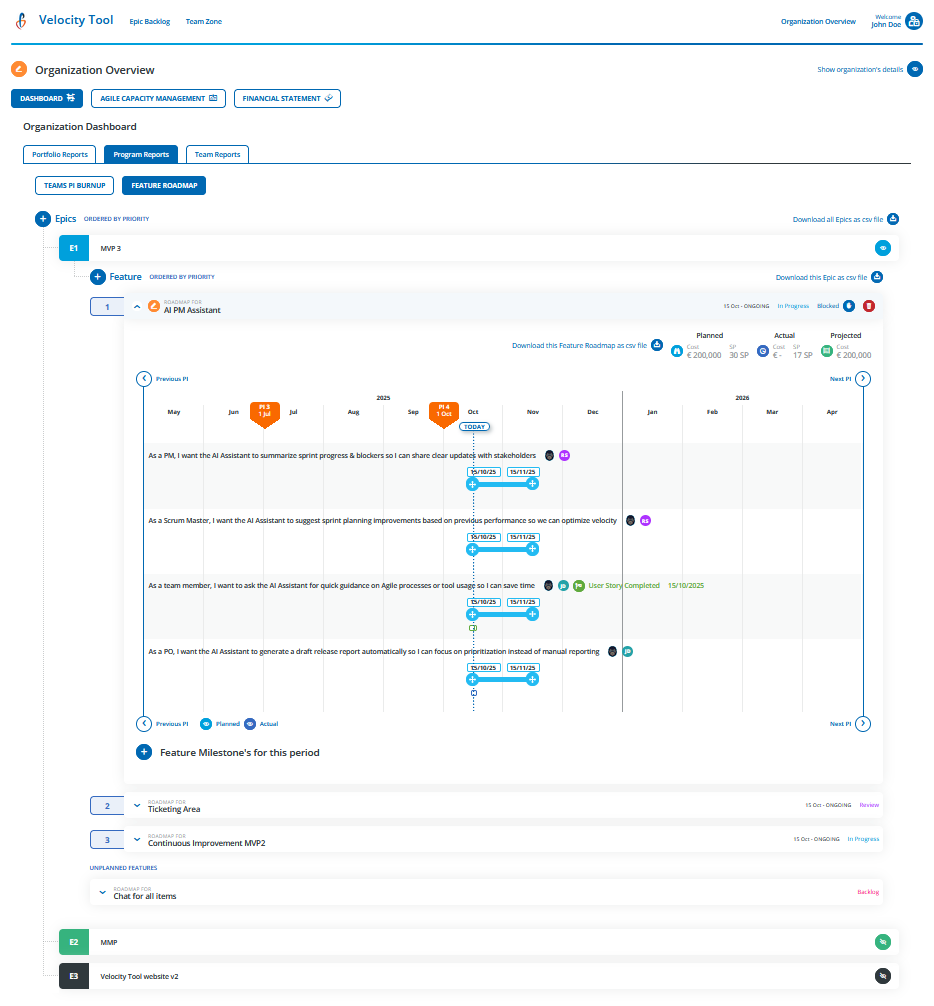Agile Backlogs
Manage & prioritize work items from Team to Portfolio
4 types of Backlogs, each representing different levels of work items that are managed & prioritized throughout the Agile lifecycle.
Key elements include:
- Epics: Large, high-level initiatives or business objectives that span multiple Planning Intervals (PI’s). Providing strategic direction & broken down into Features for execution.
- Features: Groupings of related User Stories that deliver a specific capability or business value & typically planned within a single PI.
- User Stories: Smaller, more granular work items that define individual requirements from the user’s perspective & typically completed within a single iteration.
- Tasks: The smallest units of work that break down User Stories into actionable steps, often assigned to specific team members to complete within the iteration.
These Backlogs help ensure alignment from high-level strategic goals (Epics) down to actionable tasks, enabling efficient planning, tracking, and delivery across all levels.
Epic Backlog
Epic Backlog
Where big ideas or business initiatives are managed across teams & time.
Key features include:
- You can list, organize & prioritize your most important business goals (Epics).
- With one click you can track progress, budget & initiative’s impact.
- Connect Epics to features, User stories, Teams & Timelines.
- Use it to make better decisions about what to fund & work on next.
- Enable Epic hypothesis tracking, MVP planning & progress reporting.
- Enable strategic alignment, investment decisions & keep your big-picture roadmap clear & data-driven.
Feature Backlog
Feature Backlog
A prioritized list of Features maintained by the Product Management team, representing a service or functionality that delivers value to the customer & fits within a single Planning Interval.
Allows both teams & Product Managers to:
- Prioritize Features based on value, risk & dependencies.
- Link Features to Epics, Teams & Iterations.
- With one click you can track Feature progress percentage across Teams.
- Align with a Planning Interval (PI) Objectives & Roadmaps.
Connects Initiative (Epic) to Team execution.
User Story Backlog
User Story Backlog
Team-level workspace where Agile Teams manage & refine their upcoming user stories.
Key features include:
- Capture, prioritize & refine the smallest unit of work that delivers business value.
- Linked to Features & Iterations for full traceability.
- Supports estimation, automated status tracking & acceptance criteria.
- Enables Team collaboration during backlog refinement sessions.
Ensure that Agile Teams stay focused on delivering small, incremental value during each iteration, while keeping alignment with the overall Planning Interval (PI’s) objectives.
Task Backlog
Task Backlog
A list of individual Tasks required to complete User Stories in an Iteration.
They are usually smaller work units that break down user stories into actionable steps for the daily work of Agile Teams.
Key features include:
- Break down of a User Story into manageable work items to be completed within the sprint.
- Can be adjusted as the team progresses during an iteration.
- Each Task has clear ownership & is tracked for completion to ensure smooth Iteration progress & a timely delivery.
- Enables the Team focus on the details of what needs to be done to deliver a Feature or User Story.
Provides a detailed view of ongoing work within an iteration, allowing teams to efficiently manage the progress of Tasks, collaborate & ensure alignment with larger goals.
Roadmaps
Real-time, visual timeline of Planned, Actual & Projected work across time - keeping teams aligned & focused on delivery of their objectives
Portfolio Roadmap
Refers to high-level Epics that represent Strategic Initiatives or long-term Goals for the Organization.
Provides a visual representation of key initiatives, helping stakeholders track progress toward Strategic Objectives and align teams on overarching goals.
Epic Roadmap
A visual timeline of your high-level business initiatives (Epic).
This keeps everyone focused & aligned on the big goals & helps Portfolio & Product Management align execution with enterprise strategy.
Feature Roadmap
A visual timeline of upcoming, in-progress & completed Features across Planning Interval (PI’s).
Helps Teams, Product Managers & Stakeholders understand what’s coming next, when it will be delivered & how it aligns with product goals.

